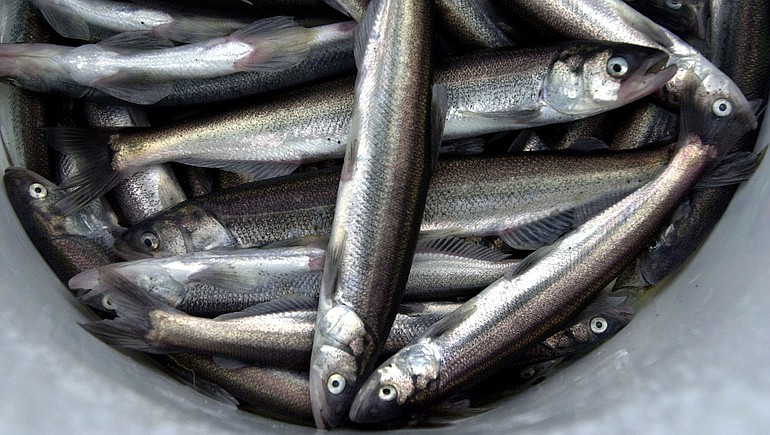o Smelt also have been called “candlefish.” The name derives from the fact that smelt are so fat during spawning — up to 15 percent of total body weight in fat — that when caught, dried, and strung on a wick, they can be burned like a candle.
Washington and Oregon on Tuesday closed the final remnants of the commercial smelt season in the Columbia River, ending a century-long fishery that once tallied its annual harvest in the millions of pounds.
The National Marine Fisheries Service listed smelt as endangered in May.
Without Tuesday’s action, commercial smelt netting in the Columbia would have opened Dec. 1. Occasionally, the handful of commercial operators still in the smelt business got a few fish from pilot runs in December.
“This day is not unexpected, but it’s still kind of a sad day,’’ said Harry Barber of Washougal, a fishery activist and leader in the Coastal Conservation Association.
Sport dipping already is closed under permanent rules in Washington. Commercial dipping in the Washington tributaries also is closed permanently unless opened by the state.
Sport smelt dipping season in Oregon tributaries of the Columbia will close effective Jan. 1.
Brad James of the Washington Department of Fish and Wildlife said there are records dating to 1888 — a year before statehood — showing a landing of 150,000 pounds of smelt.
Commercial harvest in the 1980s in the Cowlitz River averaged 2.5 million pounds, not including thousands of pounds more taken by sport dippers. The last appreciable commercial harvest in the Cowlitz was 216,200 pounds in 2004.
Because smelt haven’t returned in significant numbers since 2004, Tuesday’s action doesn’t yank fish from the market.
This year, the commercial operators landed only 3,600 pounds from the Columbia, of which 2,200 pounds came on Jan. 21.
“There’s still a lot of people who look forward each winter to buying some smelt on the market,’’ said Jack Marincovich of the Columbia River Fisheries Protective Union, an Astoria-based commercial fishing group. “There are people who like to eat them, or smoke them.’’
James said smelt woes are not limited to the Columbia River.
In British Columbia, 17 smelt populations from the Fraser River on the south to the Nass River on the north are in trouble, although some of those coastal rivers get irregular returns.
“You have to get up to Alaska to find populations in decent shape,’’ James said. “There’s an ocean current that splits and populations to the south are in trouble,’’ he said. “Something is happening out in the ocean.’’
Hobe Kytr of Salmon For All, an Astoria, Ore.-based commercial fishing group, said not all hope is lost.
Historical records show tremendous swings in Columbia River smelt populations, Kytr said.
While the fish were plentiful in the 1805-06 journals of Lewis and Clark, smelt disappear from historical mention from about 1830 to 1860, he said
“We’ve seen them disappear for a generation,’’ Kytr said. “Abundance swings in eulachon (smelt) are frequent and well-documented.’’
Guy Norman of the Washington Department of Fish and Wildlife said it is unclear how strongly smelt will have to return to be removed from the endangered species list.
Allen Thomas: 360-735-4555; al.thomas@columbian.com.




